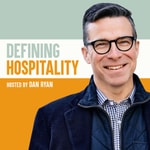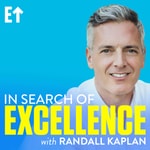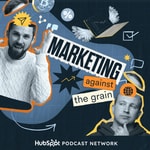Sub Club by RevenueCat – Détails, épisodes et analyse
Détails du podcast
Informations techniques et générales issues du flux RSS du podcast.
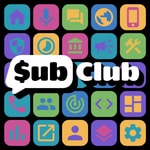
Sub Club by RevenueCat
David Barnard, Jacob Eiting
Fréquence : 1 épisode/13j. Total Éps: 133
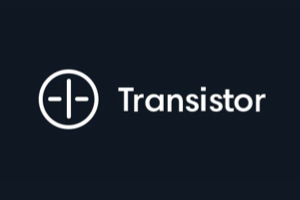
Classements récents
Dernières positions dans les classements Apple Podcasts et Spotify.
Apple Podcasts
🇬🇧 Grande Bretagne - technology
26/07/2025#90🇬🇧 Grande Bretagne - technology
25/07/2025#82🇫🇷 France - technology
17/05/2025#84🇫🇷 France - technology
14/05/2025#97🇫🇷 France - technology
17/04/2025#100🇫🇷 France - technology
16/04/2025#60🇫🇷 France - technology
29/03/2025#86🇨🇦 Canada - technology
25/03/2025#91🇩🇪 Allemagne - technology
15/03/2025#83🇩🇪 Allemagne - technology
14/03/2025#52
Spotify
Aucun classement récent disponible
Liens partagés entre épisodes et podcasts
Liens présents dans les descriptions d'épisodes et autres podcasts les utilisant également.
See all- https://www.monarchmoney.com/
4145 partages
- https://www.onxmaps.com/
1628 partages
- https://slack.com/
628 partages
- https://www.tiktok.com/
6806 partages
- https://www.instagram.com/
5094 partages
- https://www.instagram.com/stevepyoung
466 partages
- https://www.instagram.com/cliffweitzman
9 partages
Qualité et score du flux RSS
Évaluation technique de la qualité et de la structure du flux RSS.
See allScore global : 79%
Historique des publications
Répartition mensuelle des publications d'épisodes au fil des années.
Bootstrapping a Subscription App to 5M MAU and 2X+ Revenue Growth — Bruno Virlet, Genius Scan
Épisode 109
mercredi 22 janvier 2025 • Durée 01:03:09
On the podcast we talk with Bruno about putting customers ahead of metrics, why there’s still massive opportunity to build successful apps today, and how a server crash turned into an accidentally successful A/B test.
Top Takeaways:
📈 The app ecosystem still holds massive opportunities
Developers often assume the app market is saturated, but it continues to evolve with new possibilities. Technologies like AI, AR, and better hardware create untapped opportunities for developers who are willing to innovate. Even in mature categories, developers can find success by solving specific user problems and offering unique value. Genius Scan’s long journey from a dorm-room project to a 5M MAU business shows that with the right focus, developers can still thrive in the app economy.
💡 Putting customers ahead of metrics builds better businesses
Focusing on user needs over short-term KPIs creates stronger, longer-lasting businesses. Genius Scan avoids manipulative monetization tactics, instead building trust through transparent pricing and responsive support. By prioritizing the customer experience, the team has cultivated loyalty and word-of-mouth growth, proving that a people-first approach can lead to sustainable success.
🎯 Simplified pricing boosts revenue without hurting adoption
Bold pricing experiments can yield surprising results. When Genius Scan consolidated its subscription offerings by removing the lower-priced tier, the number of daily purchases remained the same, but revenue tripled as users gravitated toward the higher-tier option. This proves that users value premium offerings when they deliver meaningful value. Streamlining pricing not only simplifies decisions for customers but also creates opportunities for businesses to maximize revenue while maintaining adoption.
🚀 Small changes can drive big results in app performance
An accidental server crash led Genius Scan to discover that simpler banner text converted twice as well as their original messaging. By intentionally testing the change, they uncovered a small tweak with outsized results. This underscores the power of continuous experimentation—businesses can uncover growth opportunities by testing everything from messaging to UX design.
🔍 Bootstrapped success proves apps can thrive without funding
Indie developers can compete with tech giants by delivering specialized features that go beyond the basics offered by platform-native tools. Genius Scan, with its advanced scanning and export functionality, demonstrates how bootstrapped businesses can thrive by solving real problems for specific audiences. Building a sustainable business doesn’t always require outside funding—it requires focus, persistence, and delivering meaningful value to users.
About Bruno Virlet
🚀 Co-founder of Genius Scan, one of the earliest and best scanning apps for smartphones, bringing advanced document scanning to millions of users worldwide.
📄 Bruno Virlet started Genius Scan with his roommate as a fun side project during their time at the University of Illinois, turning a simple idea into a 15-year journey of bootstrapped success.
💡 “We didn’t want to be entrepreneurs—we just wanted to build something useful. It was about creating an app we’d want to use ourselves. That’s still the ethos driving us today.”
🔧 Through continuous experimentation (even accidental A/B tests!), Bruno has grown Genius Scan to 5 million monthly active users—all while staying true to a customer-first approach.
Resources:
Follow us on X:
- David Barnard - @drbarnard
- Jacob Eiting - @jeiting
- RevenueCat - @RevenueCat
- SubClub - @SubClubHQ
Episode Highlights:
[00:00] The Genius Scan journey begins: How a side project in a university dorm room grew into one of the most successful scanning apps with 5 million monthly active users.
[02:09] Pivoting early: The original idea was scanning paintings in museums, but technical and market constraints led to a shift toward document scanning.
[05:38] A stroke of luck: How a canceled trip and a refund led Bruno to buy a MacBook and develop the first version of Genius Scan in just six weeks.
[07:26] App Store beginnings: Launching Genius Scan as a free app in 2010 and watching it skyrocket in the rankings before experimenting with monetization.
[13:45] Competing with tech giants: How Genius Scan stays relevant and competitive despite Apple and Google introducing native scanning features.
[19:50] Customer-first philosophy: Why Genius Scan focuses on user experience and avoids dark patterns, keeping features accessible without sacrificing long-term user trust.
[26:43] Experimenting with subscriptions: The shift from one-time purchases to subscription models, and how removing a lower-tier option increased revenue without affecting conversion.
[43:56] The accidental A/B test: A server issue revealed how minor changes in paywall text and presentation doubled conversions.
[50:05] Learning from feedback: How staying close to users through direct support drives product improvements and reinforces customer loyalty.
[57:45] Building a company for the long term: Bruno reflects on balancing growth, profitability, and personal priorities, emphasizing the value of independence and sustainable success.
Making Web2App Work: From Basic Landing Pages to Complex Sales Funnels — Nathan Hudson, Perceptycs
Épisode 108
mercredi 8 janvier 2025 • Durée 01:11:05
On the podcast we talk with Nathan about the strategic opportunity of web2app, how and when to use web2app, and why one app found success using webinars in their web2app funnel.
Top Takeaways:
🔑 Web-to-app opens up opportunities for small apps
Smaller apps can use web-to-app strategies to improve cash flow, gain better attribution data, and test acquisition campaigns with smaller budgets. It’s an effective way to experiment with paid growth without relying solely on app store mechanics.
🎯 Gain full control over the user journey
Web-to-app lets developers craft highly personalized and seamless user journeys. Build onboarding flows, quizzes, and paywalls tailored to your users, free from app store restrictions.
🌎 Reach untapped audiences with web-first content
Web-to-app opens the door to users who don’t convert directly through app ads. Channels like blogs, gated content, or webinars are excellent for capturing lower-intent users and nurturing them into app subscribers over time.
💸 Increase revenue with smarter sales tactics
Web-to-app enables upsells, cross-sells, and product bundling that aren’t always feasible in-app. This strategy is particularly effective for higher ticket subscriptions or apps looking to diversify revenue streams.
📣 Leverage unique channels to drive growth
Web-to-app expands the range of channels you can use effectively, from influencer campaigns with trackable links to affiliate partnerships, YouTube ads, and beyond. Each channel provides new ways to engage users at different stages of the funnel.
About Nathan Hudson
- 👨💻 Founder & CEO of Perceptycs, a growth consultancy specializing in web-to-app strategies that drive user acquisition, retention, and revenue for mobile apps.
- 👥 Nathan Hudson is passionate about helping apps reach their full growth potential by leveraging personalized user journeys, strategic web funnels, and creative acquisition channels tailored to their unique goals.
- 💡 “A huge advantage of web-to-app is how much control you have. You’re not locked into the app store’s rules—you can fully tailor the experience, from onboarding questions to paywalls, in ways that resonate with your users”
Resoureces:
Follow us on X:
- David Barnard - @drbarnard
- Jacob Eiting - @jeiting
- RevenueCat - @RevenueCat
- SubClub - @SubClubHQ
Episode Highlights:
[3:01] What does web-to-app mean?: Nathan Hudson explains the concept as converting traffic on the web or starting on the web before directing users to the app.
[5:28] Web-to-app strategies for different use cases: Nathan highlights common approaches such as quizzes, blog posts, and webinars to drive user engagement and app downloads.
[6:31] Defining web-to-app: Jacob Eiting describes it as using the web as part of either an acquisition or retention funnel.
[8:50] The benefits of cash flow: Nathan explains how web-to-app helps early-stage apps avoid waiting for long payment cycles by leveraging web purchases.
[10:50] Comparing conversion rates: Nathan shares that web often achieves higher conversion rates than app stores, particularly for higher-ticket subscription products.
[14:28] The role of attribution: Nathan discusses the advantage of better attribution tools on the web compared to app-only campaigns.
[20:23] Controlling user journeys: Nathan highlights how web-to-app allows brands to tailor onboarding experiences based on ad campaigns and user behavior.
[30:01] Reaching new audiences: Nathan explains how web-to-app campaigns can attract low-intent users and nurture them through lead magnets and webinars.
[37:07] Expanding to older audiences: Nathan discusses how web funnels allow brands to engage with desktop users and older demographics who may avoid app-only experiences.
[52:46] Personalization for success: Nathan emphasizes the importance of tailoring user experiences on web-to-app journeys to reflect user needs and context effectively.
Marketing Your App More Efficiently with Apple Search Ads — Dilip Reddy, Search Ads Optimization
Épisode 99
mercredi 4 septembre 2024 • Durée 01:00:19
On the podcast: The impact of Apple Search Ads on organic search, how to save money on brand defense, and why ROAS shouldn’t be the only thing you optimize for.
Key Takeaways:
📊 Optimizing brand keyword bids can protect traffic and reduce costs
Running ads on brand keywords helps protect your traffic from competitors. By experimenting with lower bids, you can often maintain visibility while reducing costs, ensuring that you capture valuable traffic efficiently.
💸 Long-term ROAS is key for subscription app growth
Subscription apps should focus on the lifetime value (LTV) of users rather than just immediate ROAS. A campaign that breaks even over 365 days, rather than in the first week, can still be highly profitable if it contributes to stacking valuable subscriber cohorts that generate long-term revenue.
🔄 Broad match keywords can uncover valuable, unexpected search terms
Using broad match in Apple Search Ads can help discover new, high-intent keywords that might not have been initially considered. Regularly reviewing search term reports allows you to identify and capitalize on these hidden opportunities, expanding your app’s reach effectively.
🌍 Emerging markets offer untapped Apple Search Ads potential
As Apple expands its App Store presence in new regions, testing campaigns in countries like Brazil can lead to unexpected gains. Often, these markets have less competition and lower CPAs, making them fertile ground for scaling your app’s user base efficiently.
🛠️ Custom product pages can enhance campaign performance by targeting specific user segments
Leveraging custom product pages in Apple Search Ads allows you to tailor the App Store experience to specific keywords or user segments. This strategy can improve conversion rates by aligning the app's messaging and visuals with the search intent, making it especially useful during seasonal promotions or for targeting niche audiences.
About Guest
👨💻 Data engineer and founder of Search Ads Optimization.
📢 Dilip helps app developers and marketers optimize their Apple Search Ads campaigns and increase their ROI using data-driven insights and automation.
👋 LinkedIn
Follow us on X:
Episode Highlights
[5:35] Everybody’s changing: Trends for Apple Search Ads in 2024.
[11:09] Running (brand) defense: Experimenting with lower bids to save money while maintaining the level of impressions you want.
[19:16] Widening the search: How to leverage exact match and broad match keywords in Apple Search Ads.
[29:46] ‘Tis the season: How different times of year and holidays can affect CPA and ROI for Apple Search Ads campaigns.
[35:05] Playing the long game: Why subscription app developers should think about long-term — not short-term — return on ad spend (ROAS).
[48:16] Tipping the scales: How to scale Apple Search Ads.
[55:11] Custom-fit: How to implement custom product pages in your Apple Search Ads strategy.
The Next Big Opportunity in Software — Eric Crowley, GP Bullhound
Épisode 9
mardi 2 février 2021 • Durée 51:51
Our guest today is Eric Crowley, a tech investment banker with GP Bullhound, focusing on consumer subscription software (CSS), enterprise software, and financial technology. With investments in companies ranging from Spotify to Fishbrain, and clients such as AllTrails, Partnerize, and Motif, GP Bullhound provides transaction advice and capital to many of the leaders in the consumer subscription software space.
In this episode, you’ll hear about:
(8:52) Prediction: There will be 50 more publicly-traded CSS businesses in 10 years.
(25:38) Web 3.0 is subscription-only CSS services.
(32:30) Cost structures for CSS vs. SaaS; Calendly.
(49:08) The evolving investment ecosystem: what does the future of CSS look like?
Follow Us:
David Barnard: https://twitter.com/drbarnard
Jacob Eiting: https://twitter.com/jeiting
Eric Crowley: https://twitter.com/crowxu
Quotes:
“An easy bet to make is that there will be 50 more CSS publicly-traded businesses in 10 years than there are today.” - Eric
“My thesis is that if you fast-forward 5 years or even 2 years, I bet most people will be subscribing to 4 or 5 different things — through their phone only. And I bet that’ll be closer to 10 in the next 3 years.” - Eric
“The exciting thing about this space is that entrepreneurs are building better products.” - Eric
“Consumers have been conditioned, just like CTOs and businesses were, to pay for software — because it makes your life better.” - Eric
“The thing that I get excited about with CSS is that it can be done with very little capital raised.” - Eric
“I think you’re going to see people see value in these services because they streamline your life. They make things easier, either in your professional work or your personal work, and the idea of $10 a year for something is not that material.” - Eric
“Looking at all these trends — people paying for podcasts, things like OnlyFans and Substack — we’re seeing these financial gatekeepers, or barriers to the direct exchange of value between very disparate creators and consumers, coming down.” - Jacob
Like this episode?
Subscribe to Sub Club on Spotify or Apple Podcasts to get the latest news on mobile subscription apps.
Building a Lean Growth Machine for the World’s Largest Journaling App — Darius Mora, Reflectly
Épisode 8
mercredi 20 janvier 2021 • Durée 54:47
Darius Mora is the Chief Marketing Officer at Reflectly, the world’s largest journaling app. Reflectly is consistently in the top 5 Health & Fitness iPhone apps in the US, competing with companies 10X its size. Over the past 6 months, Reflectly has broadened its scope, acquiring 8 new apps in the mental fitness space.
Darius has been in the app space for almost a decade and founded 4 app startups prior to joining Reflectly in 2018. He’s been focused on ASO, free marketing, paid user acquisition, and retention for both Android and iOS apps.
In this episode, you’ll hear about:
(2:58) How Darius joined Reflectly.
(4:48) How Reflectly added subscriptions and grew to 12 million users.
(13:40) 3 solutions for getting past the growth “glass ceiling;” second product-market fit.
(18:57) User retention and churn; the “leaky bucket;” Apple’s 85/15 revenue split.
(24:52) A quick and easy hack for boosting retention: add paid subscriptions.
(29:28) Split-testing strategies; Amplitude; Mixpanel; RevenueCat.
(44:43) Advertising on TikTok vs. Instagram.
Follow Us:
David Barnard: https://twitter.com/drbarnard
Jacob Eiting: https://twitter.com/jeiting
Darius Mora: https://www.linkedin.com/in/moravcik
Follow Reflectly:
Quotes:
“I’ve had 25 apps on the App Store, and I feel like I’ve learned more from the failures than the successes.” - David
“[With my first app] we made all the usual mistakes… we spent half a year building it without talking to a single user, released it — crickets.” - Darius
11:30 “I think in SaaS, but also in consumer apps, the need for capital is going down… infrastructure can be rented, things can be experimented with and scaled very cheaply. It really doesn’t take what it used to to get something off the ground. And I think, strategically, it’s really smart because the leaner you are, the more options you have — and options are leverage.” - Jacob
“It does feel like we’re in the middle of a gold rush. There’s just huge opportunities and shiny objects every day, all around. So the hard thing is staying focused — and are you willing to wait out 5 years until you start generating that recurring annual revenue?” - Darius
“Most of the things that vendors are selling at conferences [solve] problems that are fixed by a better product.” - Darius
“Unless you have really good retention, you shouldn’t be doing anything else — none of the other stuff will matter.” - Darius
“You can’t fix bad retention with better growth strategies.” - Darius
“Retention is a metric that measures product-market fit; it’s not a goal in itself. If you don’t have retention, it’s not a retention problem — it’s a product-market fit problem.” - Jacob
“The truth is, a lot of times monetization is easier than retention. If you can figure out how to build an amazing product that works, monetization is not really difficult.” - Darius
“It’s nice to get annual subscriptions because you get all the money up front, but a lot of times companies will get more money from doing the monthly because you can price it higher compared to the annual. And you get a higher LTV down the line, but it comes after a couple of months instead of all the money up front. So depending on what stage you’re in and how much pressure you [have for] scaling, you can decide which one you’re going to push more.” - Darius
“When you’re running ads on any platform, it’s quantity over quality. Don’t show the market what you think is good. Show them everything you’ve got, and they’ll tell you what’s good.” - Darius
Transitioning a Free App with Millions of Users to Subscriptions — Vu Pham & Nick Robinson, Zero
Épisode 7
mardi 12 janvier 2021 • Durée 47:29
Today on the podcast we have two guests from Big Sky Health: Vu Pham, who works on the product team, and his colleague Nick Robinson, Chief Business Officer.
Big Sky Health was founded to help people live healthier, longer lives with the help of technology. They are currently working on 3 apps: Zero, the world's most popular fasting app, Less, an app for more mindful drinking, and Oak, a meditation and breathing app.
In this episode, you’ll hear about:
(6:07) Zero helped create the “fasting app” category.
(9:17) How Zero is scaling health advice to millions of patients; Dr. Peter Attia.
(13:13) Striking a balance between free features and paywalled premium content.
(25:44) Data tracking; long-term revenue goals and retention.
(32:38) Balancing a mission-driven mindset with paid conversions and return on ad spend.
(41:33) Business success metrics; ARR; volume vs. conversion.
(46:15) Forecasting ARR with auto-renewal status; A/B tests; churn.
Follow Us:
David Barnard: https://twitter.com/drbarnard
Jacob Eiting: https://twitter.com/jeiting
Vu Pham: https://www.linkedin.com/in/vuprofile/
Nick Robinson: https://twitter.com/njrconcepts
Zero Fasting Links:
Quotes:
“We’re in this place now where we have these small apps that are really interactive, engaging, content delivery platforms — and they allow these people with value to add to people’s lives to reach them in a way… that television, radio, books, or podcasts never could.” - Jacob
“It’s using content plus technology, forming community modes around it — but it’s all about amplifying these niche desires, these niche needs that people have. And you kind of turn into a mini TV network that’s better and it’s optimized.” - Nick
“We know a lot about you as a user, what your goals are, where you are in your health journey, and we can contextually provide content to you in the moment of need.” - Nick
“Working with RevenueCat made our steps leading up to launch a lot easier.” - Vu
“I hear this all the time from devs who are nervous about this transition. They’re always nervous about, ‘Oh, what are these people gonna say?’ And there are a lot of public examples of apps getting beat up about [monetizing], and I’m like, ‘Listen, you were subsidizing them — they really weren’t your customers. They really didn’t see the value in it that you do. It’s your product; you’re resetting where that value bar is. So if they’re upset, it’s like, ‘Well… it was good while it lasted. I’m sorry, but I’ve got to move on.” - Jacob
“[Free users] are huge vectors for growth for a business like this because those people, even if they’re not paying you dollars, they’re telling their friends, they’re using [your app], they’re engaging more deeply.” - Jacob
“It’s crazy the number of people that do a first download of Zero from a text message. It’s huge.”
- Nick
“For the same revenue earned, would you rather have a small user base and a really, really high conversion rate? Or would we rather have a really small conversion rate, but a huge user base?”
- Vu
Like this episode?
Subscribe to Sub Club on Spotify or Apple Podcasts to get the latest news on mobile subscription apps.
Building a $100k App Business in 6 Months — Zach Shakked, Hashtag Expert
Épisode 6
mercredi 16 décembre 2020 • Durée 44:53
While in college Zach built Hashtag Expert, an app for finding top-performing hashtags. After growing it organically for a bit, he started doing paid acquisition and quickly scaled it to hundreds of thousands of dollars a month in revenue. You can see exactly how much Zach spent to grow Hashtag Expert to that level because he publishes an interactive dashboard that shows the past couple years of income and expenses. Zach is now writing an email newsletter on his process of building a new app business with the goal of earning $100k in profit within the first 6 months.
In this episode, you’ll hear about:
(2:28) How Hashtag Expert was born.
(7:58) Reporting in Facebook ads; Zach’s ad strategy as a bootstrapped app company.
(19:40) Pricing and paywall placement experiments; the elastic demand curve; Jake Mor.
(35:10) Zach’s latest project: a meal planning app that helps with weight loss; Weight Watchers; MyFitnessPal.
(41:11) The status of the $100k app challenge 3 months in.
Follow Us:
David Barnard: https://twitter.com/drbarnard
Jacob Eiting: https://twitter.com/jeiting
Zach Shakked: https://twitter.com/zachshakked
Quotes:
“[Hashtag Expert] definitely changed how I think about branding an app. If you make an app, it should have one really good functionality. And then if you want to build another piece of functionality that’s similar but not exactly part of it, then separating it out into its own app can be another way to get way more users because you have a whole new set of organic traffic to get.” - Zach
“If you get somebody on a subscription, you know that they’re willing to pay, and so then you can push those to all your other subscription apps. It’s a smart strategy.” - David
“[With paid ads] you’re basically building a money-printing machine. Even if you’re at break-even, if I pay $10 to get somebody and they spend $10 and I don’t profit immediately, the next year or the year after, I could make money. And that just allows you to build a substantial revenue monster.” - Zach
“If you had a machine where you could literally put in one dollar and get back two, how much money would you put into it? Literally every dollar you had! Once that clicked in my head, I started spending on ads a lot.” - Zach
“Something about showing the product as like, ‘Hey, this costs money; this isn’t a free product’ — that changes how people view it. It’s like, “Oh, OK, I have to pay for this.” - Zach
“Meeting people where they’re at and giving them more options to pay, I think, is compelling.” - David
“The narrative that subscriptions in general are a way to trick users into paying more money is, I think, more and more not becoming the case.” - Jacob
“That’s a really savvy thing, I mean, outside of app businesses in general. Validate — just get some validation, some heat.” - Jacob
“I think sometimes entrepreneurs can get caught up in themselves and believe some demand exists for something because they care about it — but you really have to take that extra step to be like, ‘Are there 10 other people I can find that also care?’” - Jacob
“There are dozens of different use cases for every app, and if you’re at scale advertising and you hit a ceiling and you’re trying to unlock additional channels for revenue, then [multi-channel optimization] is naturally the next point.” - Zach
“I never saw somebody being super, ultra-transparent about how they’re doing things — like literally documenting exactly how they named their app and exactly how they think about an app idea. There’s a lot of high-level advice out there but not a ton of micro, super focused, super transparent advice.” - Zach
Like this episode?
Subscribe to Sub Club on Spotify or Apple Podcasts to get the latest news on mobile subscription apps.
Performance Marketing in a Post-IDFA World — Eric Seufert, Mobile Dev Memo
Épisode 5
mercredi 2 décembre 2020 • Durée 50:08
Since Apple’s big announcement about upcoming privacy changes in iOS 14, mobile app developers have been scrambling to understand how these changes will affect their businesses. With IDFA effectively dead in the water, developers will no longer be able to use device-level attribution and high-resolution tracking to send targeted ads to their users. So what can they do?
In this week’s episode, we asked mobile marketing expert Eric Seufert for his take. Eric has had quite a career in mobile. From VP of user acquisition at Rovio to his recent consulting projects with subscription app companies, Eric has a depth and breadth of experience with mobile apps and games that few can match. He’s also a prolific writer. He wrote a book on freemium economics and has written hundreds of insightful articles on his site Mobile Dev Memo.
In this episode, you’ll hear about:
(1:07) Managing user acquisition at Rovio; freemium app dynamics at scale.
(6:30) Why it’s hard to determine the effect of a specific ad channel; holdout testing.
(9:10) The difference between mobile and traditional advertising: response time; Pepsi Super Bowl ads.
(22:10) Why Eric doesn’t like the term “user acquisition.”
(31:00) Why post-IDFA is more work for advertisers but provides a bigger opportunity.
(37:43) How App Store changes have shaped the entire mobile app market; Top Charts.
(44:25) Prediction: SKAdNetwork changes will most likely go into effect this January.
Follow Us:
David Barnard: https://twitter.com/drbarnard
Jacob Eiting: https://twitter.com/jeiting
Eric Seufert: https://twitter.com/eric_seufert
Quotes:
“When you’re spending a lot of money and you’re showing a person five ads a day, incrementality is critical in figuring out how much value did this particular ad contribute? … That’s the more interesting question because when these budgets get really large, you get these signals coming from all these different mediums, and figuring out which of those actually drives value is more important.” - Eric
“That’s what’s so interesting about the mobile ecosystem: that immediacy, that kind of lack of friction.” - Eric
“Just doing the fun clicking around Facebook Ad Manager, that’s not performance marketing. That’s advertising operations or something.” - Eric
“Google’s always going to tell you to spend more money. Whatever question you ask Google about improving your performance, it’s like, “Oh, just pay more money!” - David
“These systems were designed to sort of alleviate that need, on the part of the advertiser, to not have to have this big team of data scientists working on these models. Like, “Hey, we’ll do it for you!” And to be honest, Google could do it better than any individual advertiser could — it’s Google. And just the fact that they’re syndicating all that data across all these different advertisers, they just have more data than any single advertiser could. And that’s a good thing.” - Eric
“This is something I think Apple has failed at since the very beginning of the App Store: understanding the way their individual, seemingly small decisions end up shaping the entire market… Now we have SKAdNetwork, we have one ConversionValue, you can’t update it in the background, you can only do it once, it has these weird timers… the entire market for apps is going to reshape around the shape of SKAdNetwork versus it having been shaped around the existing tools.” - David
“There’s billions and billions of dollars being generated in the App Store, and it’s such a tiny little market, so people put in the effort to find ways to game, to maximum advantage, any point of leverage that Apple gives them. So now people are poring over the SKAdNetwork documentation just trying to find ways of like well, “How can I best use ConversionValue?” It will shape the design of apps. It’s going to be a totally new design paradigm.” - Eric
“I just get really scared because ultimately if [Apple gets] it wrong, we’re gonna see apps moving in a direction that just is for them to extract the most value across the ecosystem and not necessarily provide great experiences for each user. I think lower resolution tracking, in this sense, actually can lead to that.” - Jacob
Like this episode?
Subscribe to Sub Club on Spotify or Apple Podcasts to get the latest news on mobile subscription apps.
Hot Takes — The New App Store Small Business Program
Épisode 4
mercredi 18 novembre 2020 • Durée 43:00
In This Episode
Apple recently shocked the App Store developer community with news that small developers with revenue of less than $1M per year will pay a commission of 15% instead of 30%. Within hours of the news dropping, David and Jacob recorded this episode with the hottest of takes, exploring what this means for the future of the App Store.
Here's what we cover in the episode:
(1:32) Is this a good thing or a bad thing? (For once, David takes the cynical view!)
(4:39) 97% of developers using RevenueCat qualify for the program.
(7:13) What this means for ad spend, CAC, and LTV ratios.
(9:26) Doing the math: How much of a difference can this really make?
(14:16) 97% of developers are affected by this change — representing only 5% of all App Store revenue.
(18:56) What happens if you cross the $1M revenue threshold?
(26:00) The $1M “magic number”; the 85/15% split.
(36:35) How Apple could help different types of businesses succeed in the App Store; Kindle.
Follow Us:
David Barnard: https://twitter.com/drbarnard
Jacob Eiting: https://twitter.com/jeiting
Quotes:
“Indie developers can hire out more things, like customer support. You can afford to do a lot more as a small developer and spend on tools and services and help and designers — there’s so much you can spend that money on that will improve your product, that will help you build a better business, that will lead to more innovation.” - David
“What this does is it make small developers more competitive in the bids because we can spend more, so on the ad spend side of things, I think it’s a huge boon to smaller developers.” - David
“I still think that the App Store economy generally is more limited on innovation not because of money but because of App Review. VCs are making decisions whether to fund or not fund a mobile company based on App Review, not the 30%. VCs recognize that the marginal costs of digital goods and services is zero. So you can stomach a 30% tax on zero-marginal-cost goods, if you can build a great product.” - David
“From a more strictly innovation standpoint, it’s not the money that’s limiting innovation — it’s Apple’s stranglehold on what can and can’t [succeed in the App Store].” - David
“I do think this is in some way, the perfect non-action for Apple.” - Jacob
“We have to keep asking for the things that developers need, and making more money is always good! That's our mission at RevenueCat; I'm always a fan of that. - Jacob
“This is a step, it’s something, and it's not insubstantial. And it's well targeted and well thought out.” - Jacob
“Apple gave us a raise!” - David
“Ultimately I think all these things that [Apple] could do — like changes to App Review, creating a program to reduce the App Store fee for businesses who can't make it work — all those things ultimately benefit Apple in the long run. As developers are more innovative, as more apps are able to be on the App Store, as the platform grows, they're going to make even more money. So it’s a win all around.” - David
Like this episode?
Subscribe to Sub Club on Spotify or Apple Podcasts to get the latest news on mobile subscription apps.
Taking a Fitness App to Y Combinator and Beyond — Jake Mor, FitnessAI
Épisode 3
vendredi 13 novembre 2020 • Durée 42:02
Starting a mobile-first subscription app business can be tough — there are a lot of decisions to make. Should you bootstrap or raise investor funding? How will you classify your business? When is the right time to monetize your app?
Fortunately, you don’t have to go it alone! One of the best ways to chart your course is to learn from the experiences of developers who’ve been through the process before. And one of the best ways to do that is to go through an accelerator like Y Combinator.
This week, David and Jacob caught up with Jake Mor to find out how he navigated the process of building a subscription app from the ground up. Jake is the founder of FitnessAI, an app that builds personalized weight lifting plans to help people achieve their goals without having to hire a personal trainer. The app was released in early 2019 and quickly grew to over $85k in MRR! Based in part on that growth, FitnessAI was accepted into the Y Combinator Winter 2020 batch and raised a seed round coming out of demo day.
In this episode, you’ll hear about:
(4:38) Jake’s first accelerator experience; co-founding Shopturn and going through Techstars.
(8:44) The fitness app opportunity: market size, structured data, and machine learning.
(13:20) Pricing experiments; users are willing to pay more than you think.
(18:53) Scaling ad spend; what Jake learned from his first $20k.
(19:02) The importance of mentorship; Bryan Welfel; JSwipe; The Beard Club.
(22:15) Pro tip: Put your ad spend on a credit card to sync up with Apple’s payment schedule. (But be very careful to manage your debt!)
Follow Us:
David Barnard: https://twitter.com/drbarnard
Jacob Eiting: https://twitter.com/jeiting
Jake Mor: https://twitter.com/jakemor
Like this episode?
Subscribe to Sub Club on Spotify or Apple Podcasts to get the latest news on mobile subscription apps.

